No
When ticks are active in Nebraska (April-October), staff from the NE DHHS vector-borne disease program and local health departments search for ticks at various sites throughout the state in a process called "tick dragging or flagging." Using a white flannel cloth, ticks are collected and identified to species under a microscope. This information is used to understand when and where ticks are active in Nebraska and what pathogens these ticks might be carrying.
When people are aware of the types of ticks and tick-borne diseases potentially circulating in their area, they can better protect themselves and healthcare providers can target appropriate testing and treatment.
Below you will find information about medically important ticks of Nebraska.
View our surveillance data.
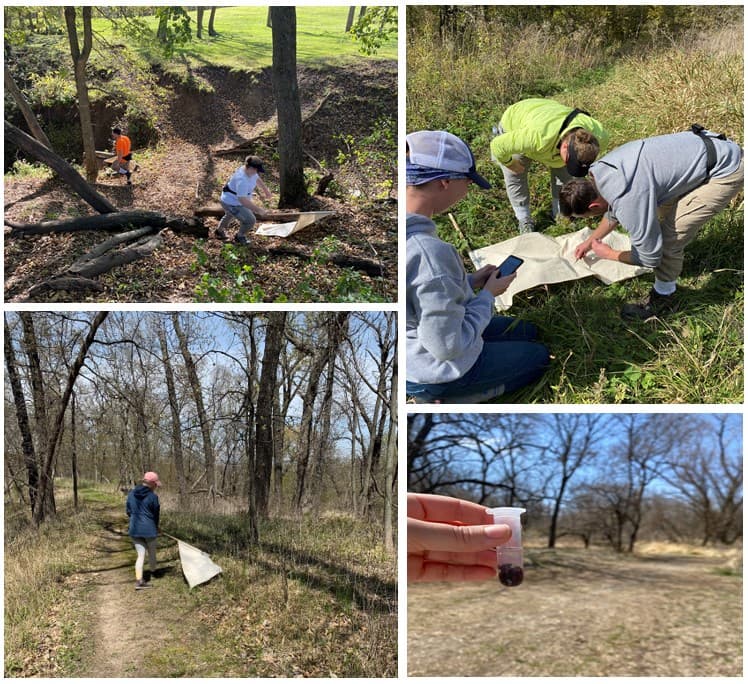 Tick dragging (flagging) in Nebraska.
Tick dragging (flagging) in Nebraska.
American Dog Tick (Dermacentor variabilis)
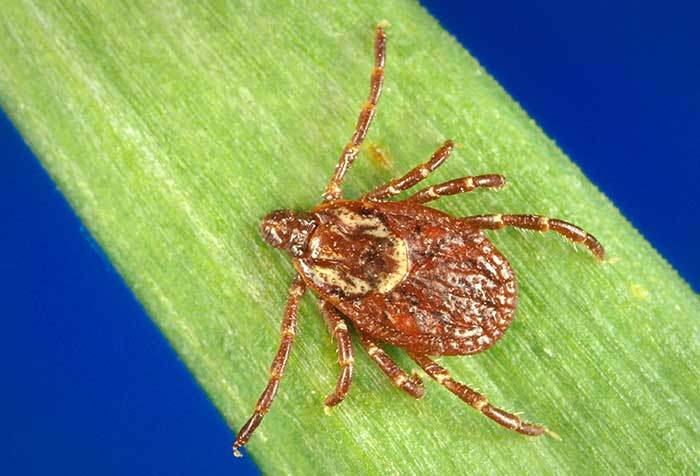 American Dog Tick
American Dog TickHighest risk of bites occurs during spring and summer. Dog ticks are sometimes called wood ticks. Adult females are most likely to bite humans. Transmits tularemia and Rocky Mountain spotted fever.
 Tick Family - American Dog Tick
Tick Family - American Dog Tick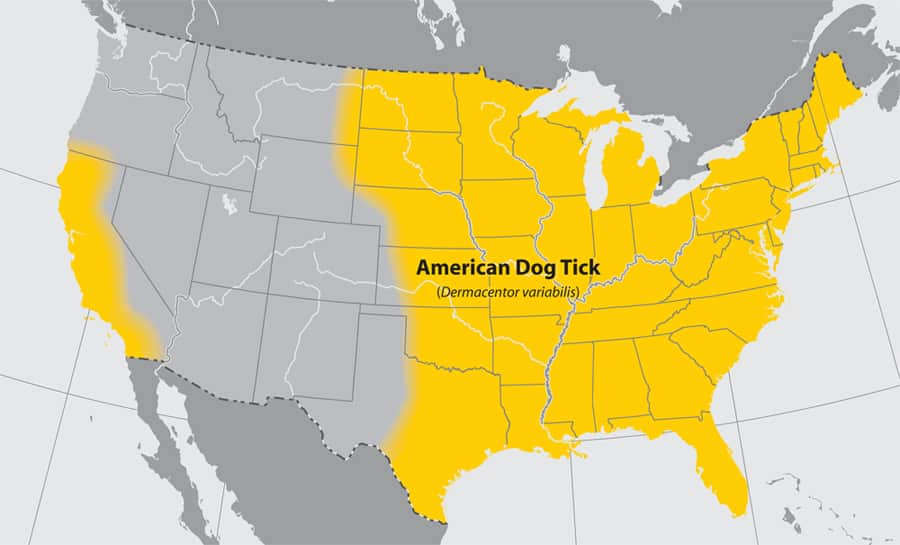 American Dog Tick Habitation Map
American Dog Tick Habitation Map
Brown Dog Tick (Rhipicephalus sanguineus)
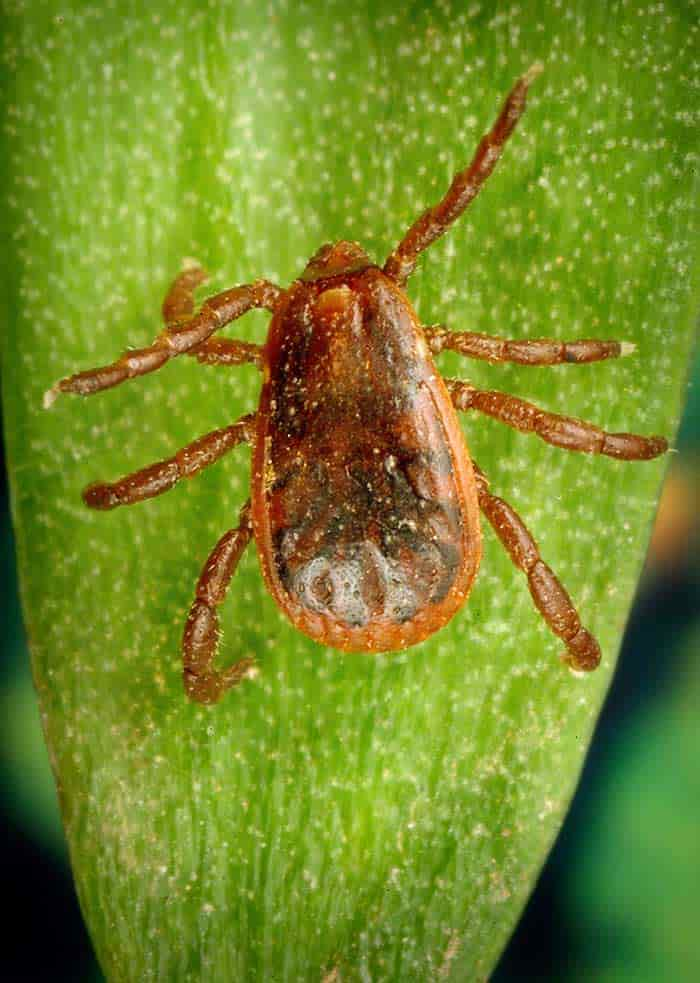 Brown Dog Tick
Brown Dog TickDogs are the primary host for the brown dog tick in each of its life stages, but the tick may also bite humans or other mammals. Transmits Rocky Mountain spotted fever (in the southwestern U.S. and along the U.S.-Mexico border).
 Tick Family - Brown Dog Tick
Tick Family - Brown Dog Tick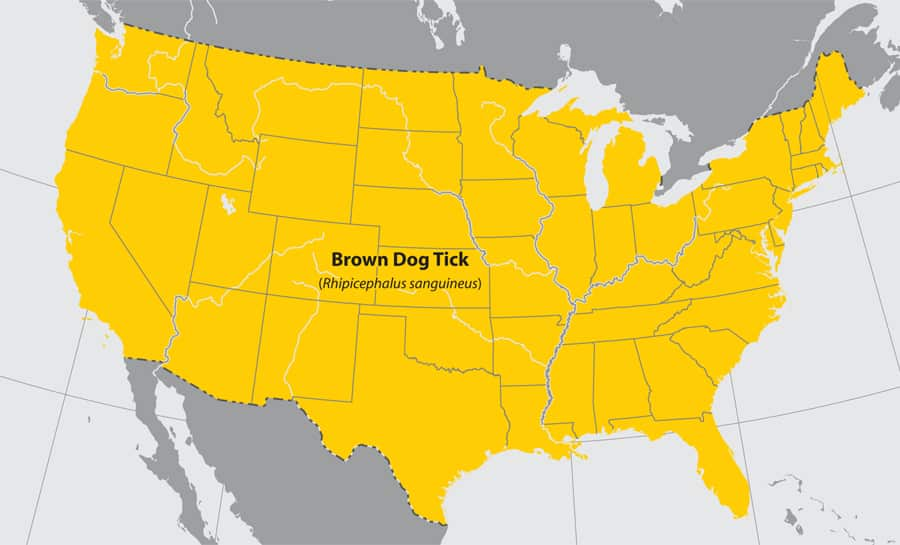 Brown Dog Tick Habitation Map
Brown Dog Tick Habitation Map
Lone Star Tick (Amblyomma americanum)
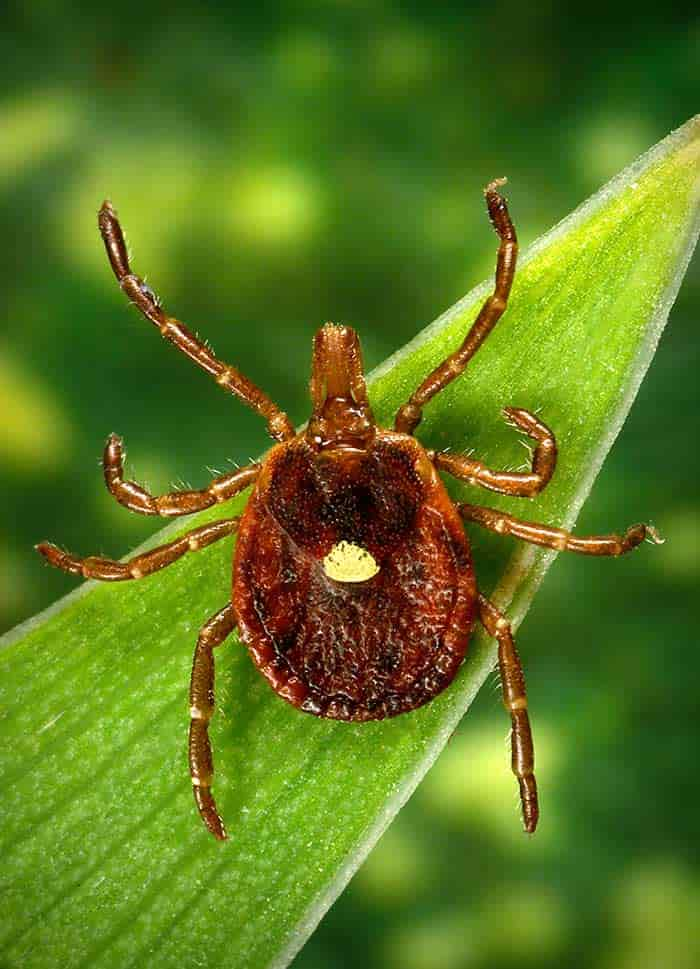 Lone Star Tick
Lone Star TickVery aggressive feeder; nymph & adult females are most likely to bite humans. Lone star tick saliva can be irritating; redness and discomfort at a bite site does not necessarily indicate an infection. Transmits ehrlichiosis, tularemia, Heartland virus, Bourbon virus, and STARI. Growing evidence suggests Alpha-Gal Syndrome may be triggered by the bite of this tick.
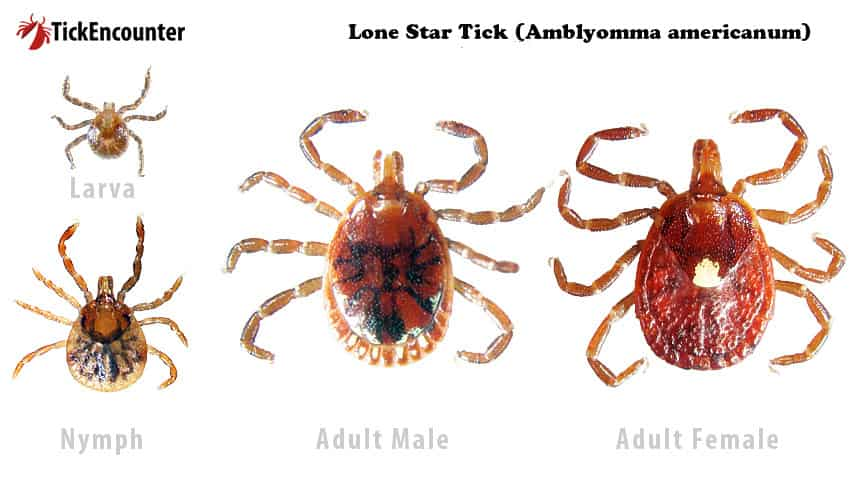 Tick Family - Lone Star Tick
Tick Family - Lone Star Tick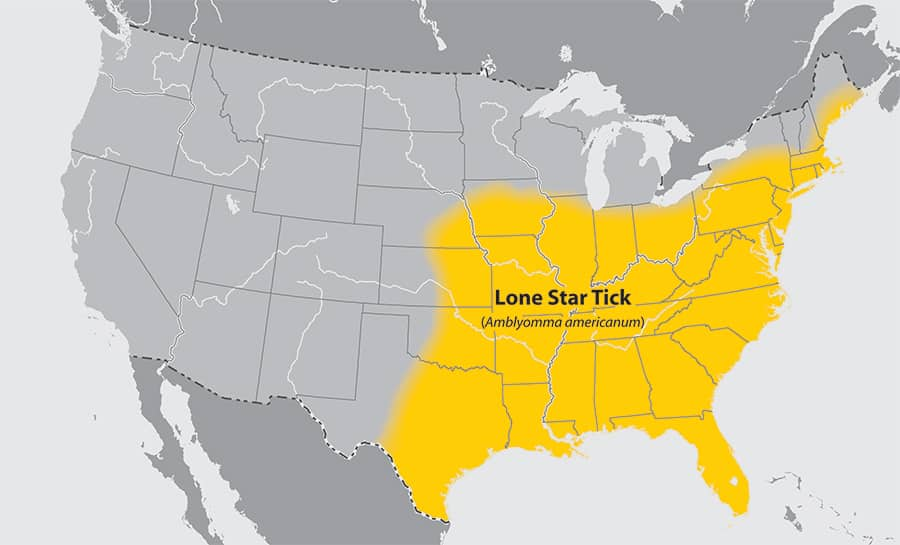 Lone Star Tick Habitation Map
Lone Star Tick Habitation Map
Rocky Mountain Wood Tick (Dermacentor andersoni)
 Rocky Mountain Wood Tick
Rocky Mountain Wood TickAdults feed primarily on large mammals, and are most commonly associated with pathogen transmission to humans. Larvae and nymphs feed on small rodents. Found at elevations of 4,000 to 10,500 feet. Transmits Rocky Mountain spotted fever, Colorado tick fever, and tularemia.
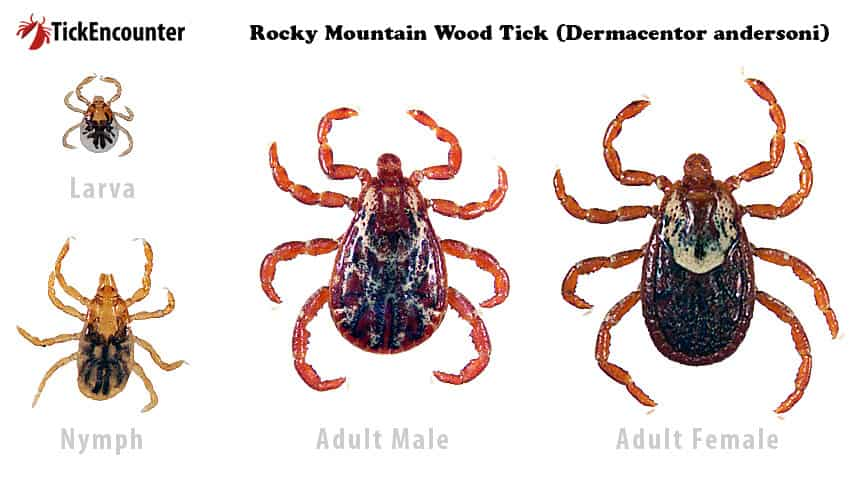 Tick Family - Rocky Mountain Wood Tick
Tick Family - Rocky Mountain Wood Tick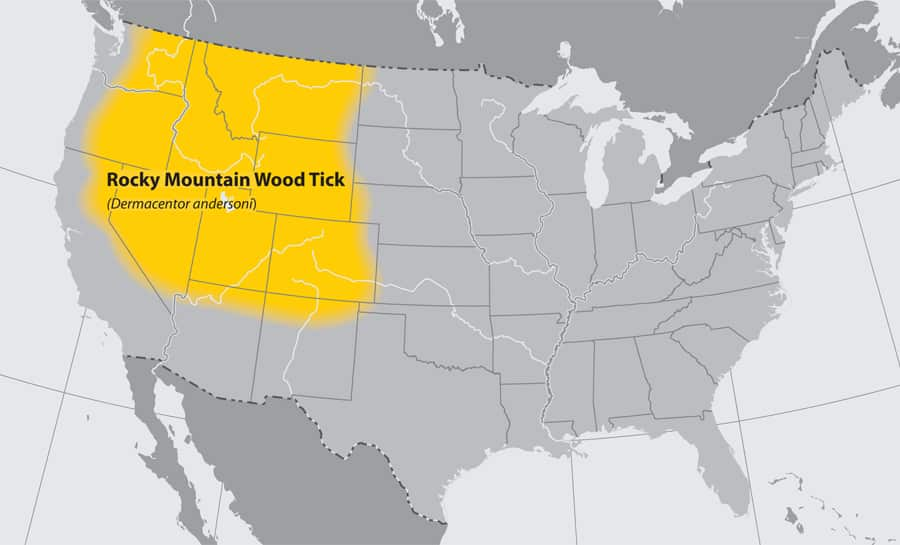 Rocky Mountain Wood Tick Habitation Map
Rocky Mountain Wood Tick Habitation Map
Blacklegged Tick (Ixodes scapularis)
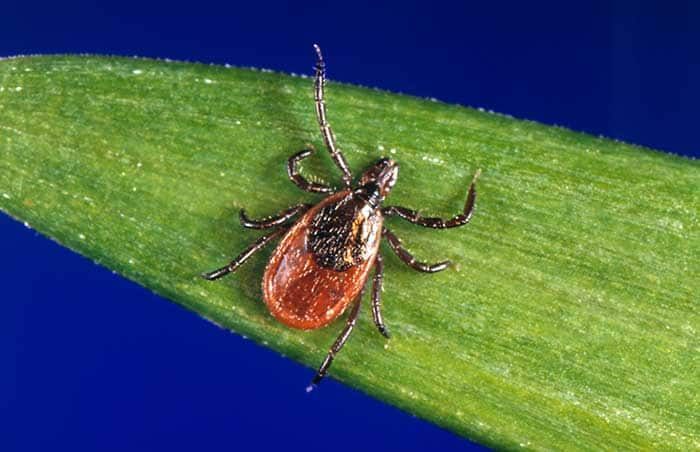 Blacklegged Tick
Blacklegged TickThe greatest risk of being bitten exists in the spring, summer, and fall. However, adults may be out searching for a host any time winter temperatures are above freezing. Stages most likely to bite humans are nymphs and adult females. Transmits Lyme disease, anaplasmosis, erlichiosis, babesiosis, and Powassan virus disease. There is growing evidence that suggests Alpha-Gal syndrome may be triggered by the bite of this tick.
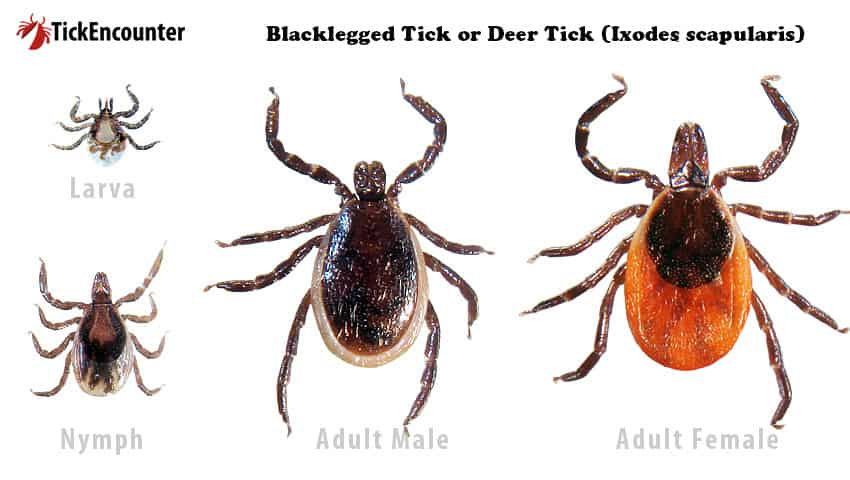 Tick Family - Blacklegged Tick
Tick Family - Blacklegged Tick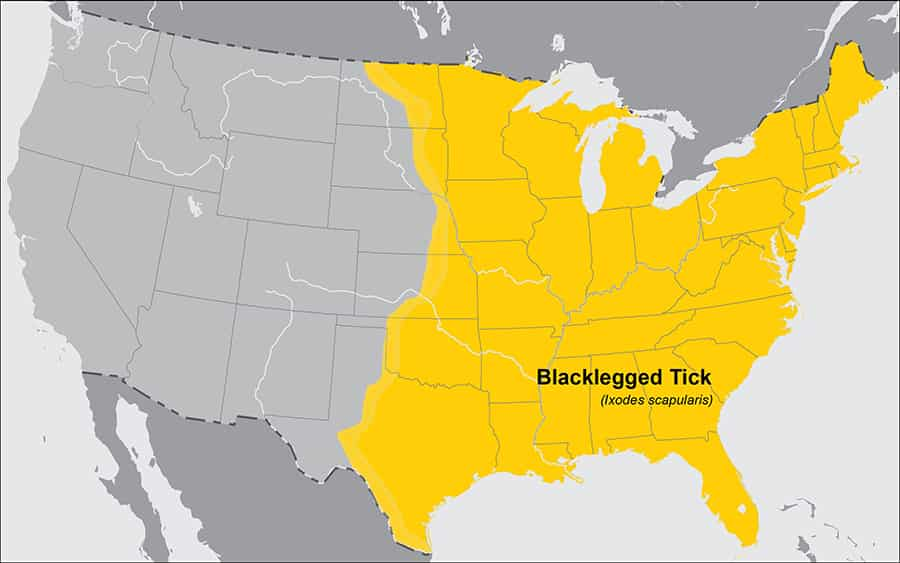 Blacklegged Tick Habitation Map
Blacklegged Tick Habitation Map